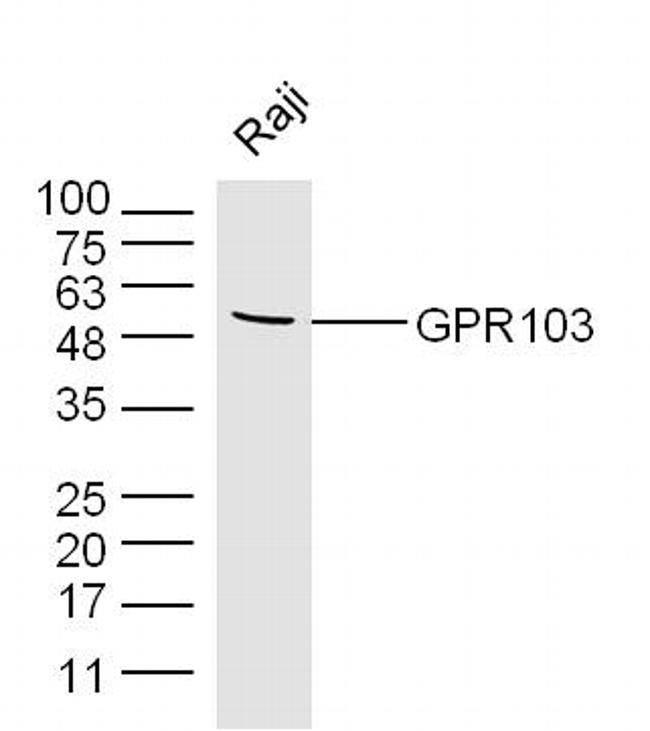Search Thermo Fisher Scientific
Product Details
BS-13512R
Species Reactivity
Host/Isotype
Class
Type
Immunogen
Conjugate
Form
Concentration
Purification
Storage buffer
Contains
Storage conditions
Shipping conditions
Target Information
G protein-coupled receptors (GPRs) are a protein family of transmembrane receptors that transmit an extracellular signal (ligand binding) into an intracellular signal (G protein activation). GPR signaling is an evolutionarily ancient mechanism used by all eukaryotes to sense environmental stimuli and mediate cell-cell communication. All of the receptors have seven membrane-spanning domains and the extracellular parts of the receptor can be glycosylated. These extracellular loops also contain two highly conserved cysteine residues which create disulfide bonds to stabilize the receptor structure. GPR103 is a 455 amino acid protein with highest expression in the brain, retina, trigeminal ganglion, hypothalamus and vestibular nucleus. In peripheral tissues, GPR103 is expressed only in the heart, kidney and testis. GPR103 may regulate adrenal function. A hypothalamic neuropeptide of the RFamide family (26RFa) acts as an endogenous ligand for GPR103.
For Research Use Only. Not for use in diagnostic procedures. Not for resale without express authorization.
References (0)
Bioinformatics
Protein Aliases: AQ27; G protein-coupled receptor 103; G-protein coupled receptor 103; Orexigenic neuropeptide QRFP receptor; peptide P518 receptor; Pyroglutamylated RF-amide peptide receptor; pyroglutamylated RFamide peptide receptor; QRFP receptor; SP9155
Gene Aliases: AQ27; GPR103; QRFPR; SP9155
UniProt ID: (Human) Q96P65, (Rat) P83858, (Mouse) P83861
Entrez Gene ID: (Human) 84109, (Rat) 310327, (Mouse) 229214

Performance Guarantee
If an Invitrogen™ antibody doesn't perform as described on our website or datasheet,we'll replace the product at no cost to you, or provide you with a credit for a future purchase.*
Learn more
We're here to help
Get expert recommendations for common problems or connect directly with an on staff expert for technical assistance related to applications, equipment and general product use.
Contact tech support

